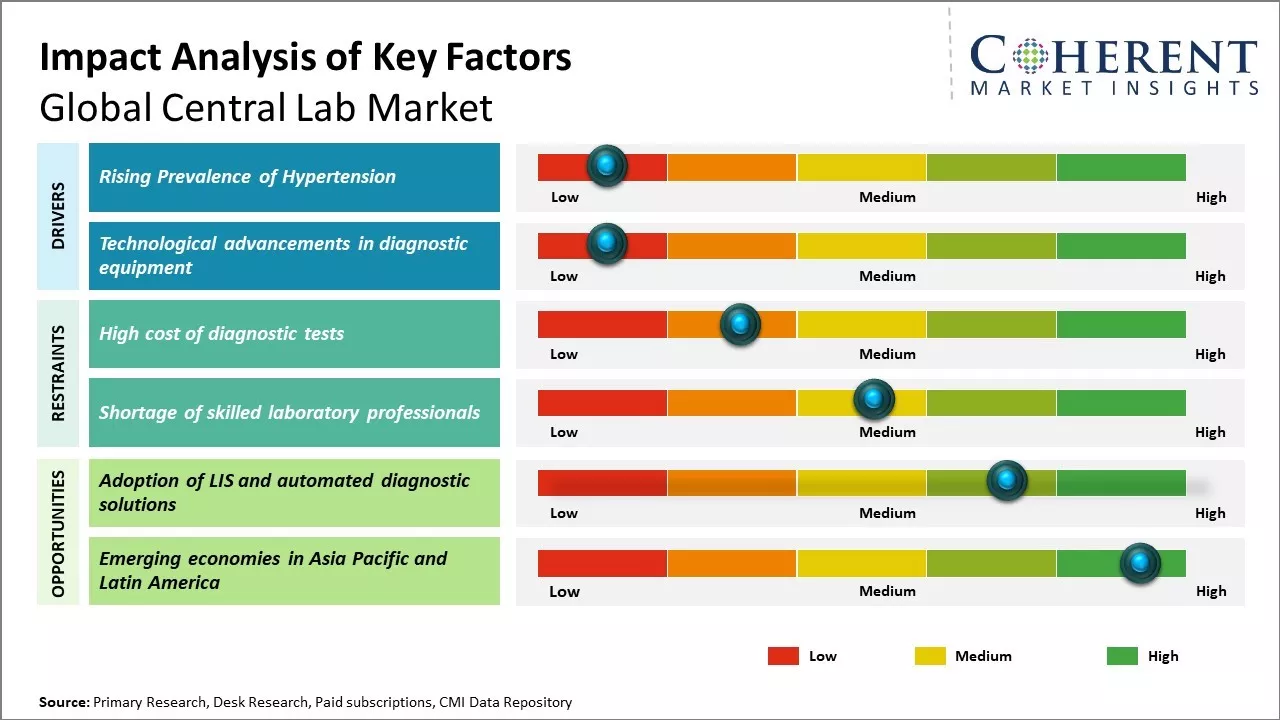Global central lab market is estimated to be valued at USD 3.63 Bn in 2025 and is expected to reach USD 5.76 Bn by 2032, exhibiting a compound annual growth rate (CAGR) of 6.8% from 2025 to 2032.

To learn more about this report, Request sample copy
Global central lab market is expected to witness positive growth over the forecast period due to factors such as increasing volume of diagnostic tests performed, rising prevalence of chronic and infectious diseases, technological advancements in diagnostic testing, and increasing demand for early and accurate disease diagnosis. However, factors such as high installation and maintenance costs of these systems and the requirement of specialized technicians to operate central lab equipment can hamper the market growth during the forecast period.
Rising Demand for Specialized Testing
Global central lab market growth is driven by increasing demand for specialized diagnostic and clinical testing. Healthcare providers are ordering more sophisticated tests than before to aid in diagnosis, develop targeted treatment plans, and monitor patient progress. Continued advancements in medical technology have enabled labs to perform highly complex assays and analysis. Tests like tumor genomic profiling, liquid biopsies, and companion diagnostics provides clinicians more granular insights into diseases at the molecular level. This information helps clinics identify the most effective therapies and personalize care. As new biomarkers and assays are discovered, there has been huge demand for those specialized services from central laboratories. Rare and complex diseases are being diagnosed more frequently as awareness rises. Conditions like cancer, neurological disorders, and genetic abnormalities require intricate testing involving multiple biomarkers, imaging integration, and big data analytics. Such multidisciplinary examination is most effectively handled by centralized labs that have aggregated diverse expertise and scientific capabilities under one roof. Community hospitals and physician offices are referring out those difficult cases more than ever to tap into advanced specialized resources. Furthermore, lifestyle diseases are becoming increasingly common globally due to aging populations and environmental changes. Burgeoning public health issues like diabetes, cardiovascular conditions, and obesity drive heightened disease surveillance needs. For instance, in April 2025, Labcorp exceeded Wall Street's expectations for first-quarter profit, driven by robust demand for specialty tests like cancer and prenatal diagnostics. CEO Adam Schechter highlighted accelerated growth in specialty testing alongside a steady increase in routine tests. With over 2,000 patient service centers in the U.S., Labcorp has benefited from a resurgence in medical procedures and routine check-ups deferred during pandemic restrictions.
Joining thousands of companies around the world committed to making the Excellent Business Solutions.
View All Our Clients